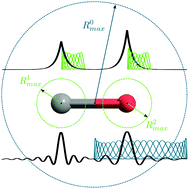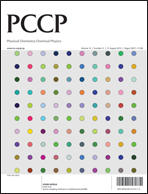We present a detailed account of existing theoretical methods specially designed to provide vibrationally resolved photoionization cross sections of simple molecules within the Born–Oppenheimer approximation, with emphasis on newly developed methods based on density functional theory. The performance of these methods is shown for the case of N2 and CO photoionization. Particular attention is paid to the region of high photon energies, where the electron wavelength is comparable to the bond length and, therefore, two-center interferences and diffraction are expected to occur. As shown in a recent work [Canton et al., Proc. Natl. Acad. Sci. U. S. A., 2011, 108, 7302–7306], the main experimental difficulty, which is to extract the relatively small diffraction features from the rapidly decreasing cross section, can be easily overcome by determining ratios of vibrationally resolved photoelectron spectra and existing theoretical calculations. From these ratios, one can thus get direct information about the molecular geometry. In this work, results obtained in a wide range of photon energies and for many different molecular orbitals of N2 and CO are discussed and compared with the available experimental measurements. From this comparison, limitations and further possible improvements of the existing theoretical methods are discussed. The new results presented in the manuscript confirm that the conclusions reported in the above reference are of general validity.

You have access to this article
 Please wait while we load your content...
Something went wrong. Try again?
Please wait while we load your content...
Something went wrong. Try again?


 Please wait while we load your content...
Please wait while we load your content...